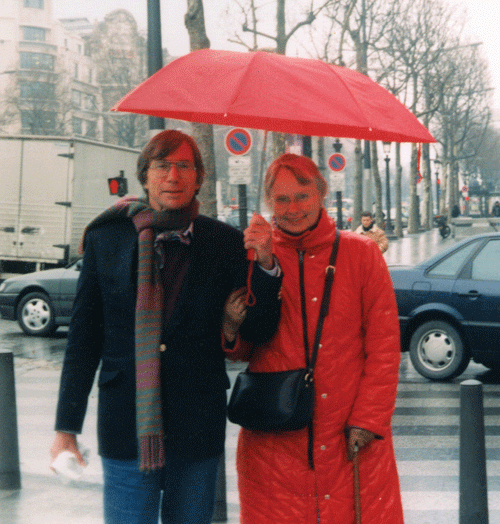When Volume 1, Number 1, of the New Fillmore appeared in May 1986, one of its features was ambitiously labeled Great Old Houses #1. It was just a picture and a paragraph about the Victorian at 2447 Washington Street written by Anne Bloomfield. “Untouched it is not,” she noted archly.
For the next 14 years, until her death in 1999, she continued writing every month about a great old house in the neighborhood. Her articles got longer and more detailed, and they became one of the paper’s most popular features.
Her writing burnished her growing reputation as a preeminent architectural historian and preservationist. She served as a member of the Landmarks Preservation Advisory Board and played a leading role in creating many of the city’s historic districts — including its first residential district, on Webster Street, where she lived.
She always intended to collect, edit and revise her columns into a book, but time ran out. “It was the one thing Anne left undone that mattered to her a lot,” said her husband, Arthur Bloomfield, an author and critic of food and music. “I couldn’t escape the feeling that ‘the Anne book’ should be done.”
So he set about turning her columns into a manuscript that could be published between hard covers.
The result is “Gables and Fables: A Portrait of San Francisco’s Pacific Heights,” a 400-page book with drawings and maps to be published in May 2007 by Heyday Books in Berkeley. The publisher presents it as a collaboration between Anne and Arthur that is “part historical detective work and part gossip column.” It is “a phantasmal composite, if you will, of her cabernet and my merlot,” Arthur says. “It was all her idea, and it’s mostly Anne’s material, but I wrote the book.”
“Gables and Fables” tells the stories of 110 houses and other buildings in the neighborhood — “an architectural and social history of one of the United States’ most attractive neighborhoods,” the publisher says, “along with the moguls, entrepreneurs, artists, mariners, recluses and charlatans who lived in them.”






